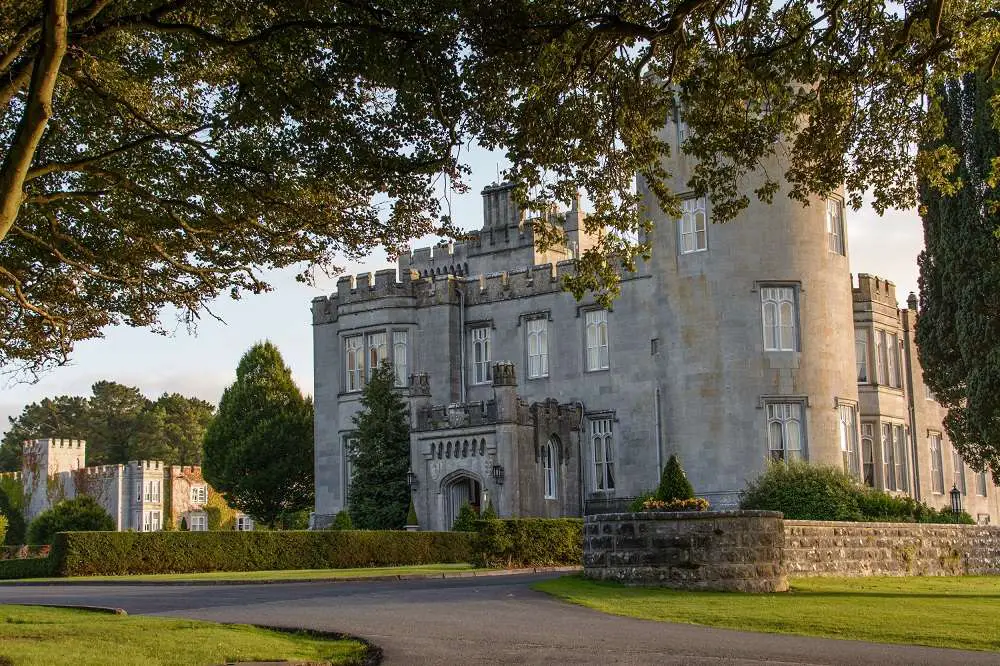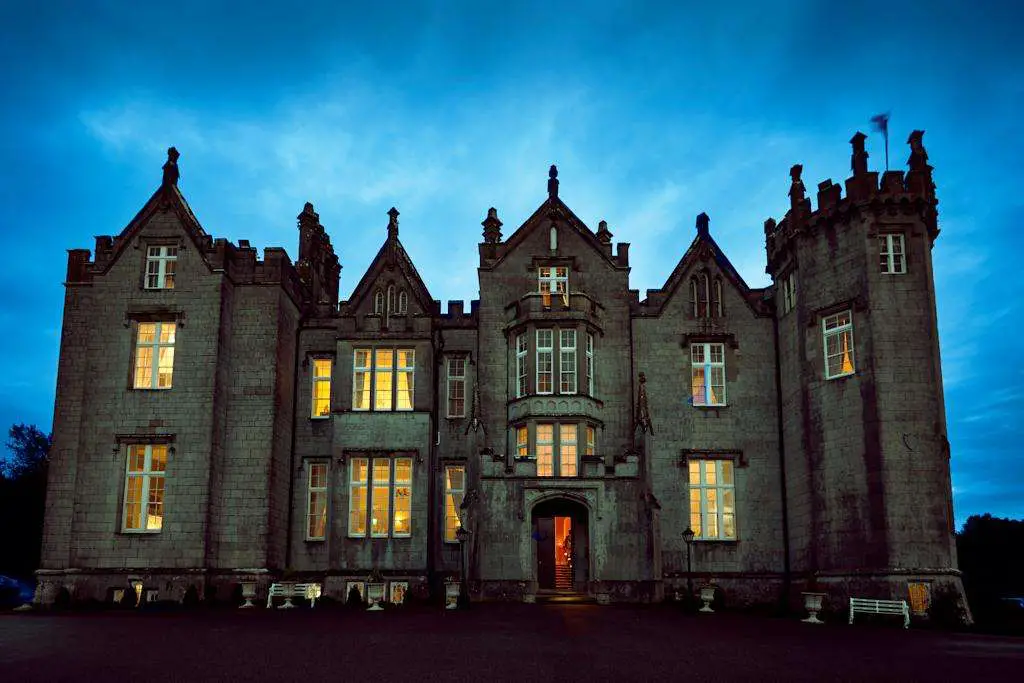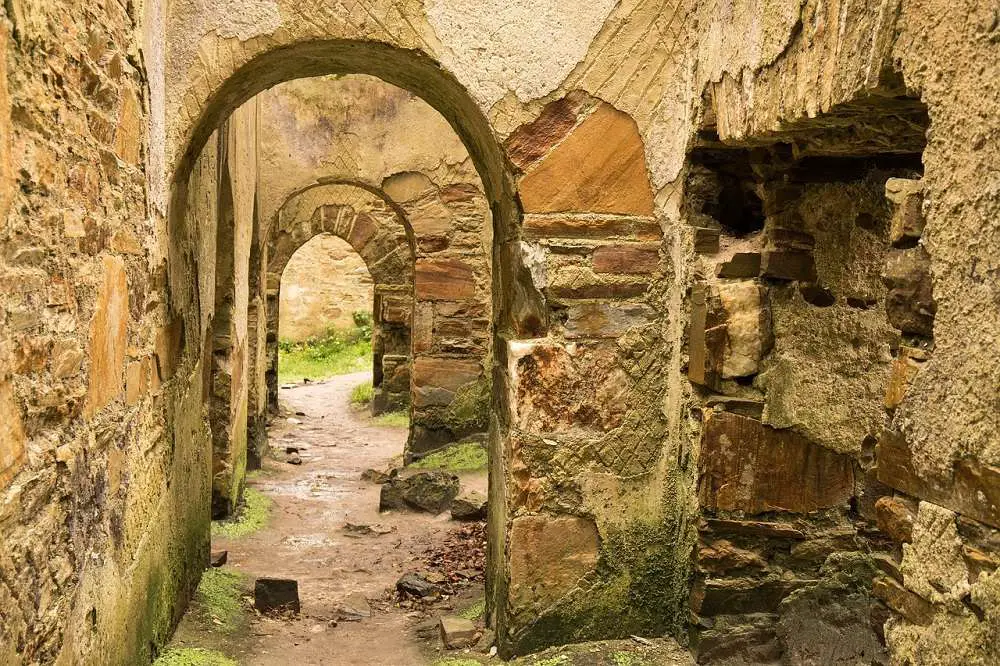Today I’ve got another guest post from Giles who has previously written about the Future of Cars and Weird Driving Laws. It’s about the weird aspects regarding the Castles Of Ireland. Check it out!
Most people who dream of touring Ireland think about one thing…the pubs! Sure, the Irish are known for raucous socializing over pints of Guinness, but the true glory of Ireland lies in its many spectacular castles scattered across the country.
So, I’ve gathered this twisted list of the best castles of Ireland that can’t be missed. Some are spectacular in their size and beauty, some are downright scary, and others are just straight-up ruined yet fascinating to encounter.
Spectacular Irish Castles You Can Sleep in
If your travel budget allows, there are some luxurious castles in Ireland that are fitted with the finest of modern comforts for tourists and locals alike.
Dromoland Castle
Built by one of Ireland’s last High Kings, Dromoland Castle was home to the Dromoland O’Brien family for 900 years. Leaders of the IRA in Dublin plotted the destruction of Dromoland Castle in the 1920s, but the estate was saved in a last-minute plea since the O’Briens had been generous in their dealings with tenant farmers.
The castle changed hands several times over the years and is now a 5-star resort. This 450-acre estate boasts of a world-class golf course, intimate spa, and cuisine that is par excellence.

Ashford Castle
Founded in 1228 by the powerful de Burgos family in Cong, County Mayo, Ashford Castle is most famously a former home of the famed Guinness family. Sir Benjamin Lee Guinness bought the castle and expanded the grounds, planting thousands of trees and extending the living quarters with Victorian flair.

It was purchased by Noel Huggard in 1939 and subsequently transformed into a luxury hotel, where actors and crew of the classic film “The Quiet Man” would later stay during filming. Over the years, the castle hotel has become a retreat of the rich and famous, complete with spas, a falconry school, equestrian center, and golf course.
Kilkea Castle
The Earl of Ulster, Hugh de Lacy, built this expansive castle in Kilkea, County Kildare in 1180. This intimate, 11-bedroom luxury castle hotel overlooks the River Greese and is the perfect setting for a dream wedding or unforgettable family reunion.
The 180-acre estate includes an 18-hole golf course and a variety of sporting activities such as archery, horse riding, and fishing. There is also a lovely restaurant, Hermione’s, which seats up to 100 guests.
A’Haunting We Will Go – Top Haunted Castles of Ireland
Ghost stories are plenty in the land of fairies and leprechauns. Here are three haunted castles you need to know about!
Kinnitty Castle
This castle is a cross-over from our previous category since it’s a widely-believed haunted castle that you can also sleep in! Of course, don’t plan on getting much shuteye, because you’ll probably be sleeping with one eye open.
The site of the current castle has a bloody past, with warring factions destroying and rebuilding both the castle and abbey beginning way back in 340 AD when it was built by the O’Carrolls. It was burned down by the IRA in 1922, restored by the government, changed hands a few times, and then turned into a hotel in 1994.

Druidic relics and a pagan altar are scattered around the grounds, but it’s primarily “The Phantom Monk of Kinnitty” who gives this place its reputation as a spooky-as-heck haunted castle. Cloaked in a black monk’s robe, he’s often spotted in the banquet hall during special occasions. There’ve also been reports of the giggles of disembodied children at odd hours, accompanied by the pitter-patter of little feet up and down the halls.
Leap Castle
Right at the heart of Ireland stands Leap Castle, perhaps one of the creepiest castles in the Emerald Isle. Built by the O’Bannon clan likely around 1250, it was taken over by the O’Carrolls who battled within the clan for power. This bloody and brutal past led to legendary hauntings by a variety of “entities.” These include
The Red Lady, a very tall ghostly female figure in a red dress who carries a dagger, as well as two young girls, one of which has been seen falling from the castle tower and disappearing before hitting the ground. Not the least of the spooky spectacles of Leap Castle is the reappearing bloodstain on the floor of the Murder Hole Room.
Even though the wood of the floor has been planed down several times, the infamous resurfacing bloodstain creeps back up to the surface within hours of being sanded out. During renovations, a dungeon was discovered from which 3 cartloads of human skeletal remains were removed. The bodies were impaled on wooden spikes, and an opening in the floor above led some to believe that the O’Carrolls made it a practice to drop unfortunate visitors through a trap door to their deaths.
Charleville Castle
Charles William Bury built this creepy castle back in the 1700s in an unfortunate place. The ground beneath Charleville Castle is said to be an ancient burial ground where the Druids buried plague victims alive to stop the spread of the disease.
Howls and screams are said to echo through the dungeons beneath the castle at night. Ghostly apparitions and distant voices have been encountered by residents and one visitor claimed to wake up surrounded by the ghosts of Druids.
Crumbled Castles Worth Exploring
Even in ruins, these ancient castles are wondrously beautiful and worthy of a visit next time you’re exploring the Irish countryside.
Clifden Castle
This gothic castle built by John D’Arcy around the year 1818 is now a shell of its former glorious self. It’s one of those places that makes you immediately wonder how anyone could let something so spectacular fall into ruins.

Alas, the famine of 1845 took a toll on the D’Arcy family’s rental income, the estate was sold to the Eyre family, who eventually lost the property to the government and the castle was stripped of everything that could be easily sold. It stands today as an awe-inspiring architectural masterpiece to be admired against the gorgeous Irish landscape.
Castle Otway
What is known as Castle Otway was built adjacent to what was left of Cloghane Castle (little more than a tower) in the 18th Century in Tipperary. The original owner, John Otway, owned the home and surrounding land, subsequently passing it on to several generations of the Otway family. The palatial estate was set ablaze during the Irish Civil War, never to be restored. The beauty of the structure itself remains, covered in lush green moss and hearkening a bygone era.
Carrigogunnell Castle
Looming atop a volcanic hill, Carrigogunnell Castle is the kind of place that inspires poetry and lyrics. The now ruinous structure overlooks the County Limerick and the River Shannon.
Although legend has it that the castle was built for the Templars, others claim it was granted by charter to Donchad Cairbreach O’Brien, Prince of Thomond in 1209. In any case, the castle was blown up by the English during the 1691 Siege of Limerick, using vast amounts of gunpowder.

The rocky ruins that stand today are covered in ivy and moss. Still breathtaking in appearance, fans of the Irish band U2 will recognize Carrigogunnell Castle from the back of their 1984 album, “The Unforgettable Fire.”
Castled out?
If you’re planning a trip soon, check out my best travel insurance tips, and get a quote on some Backpacker Travel Insurance.